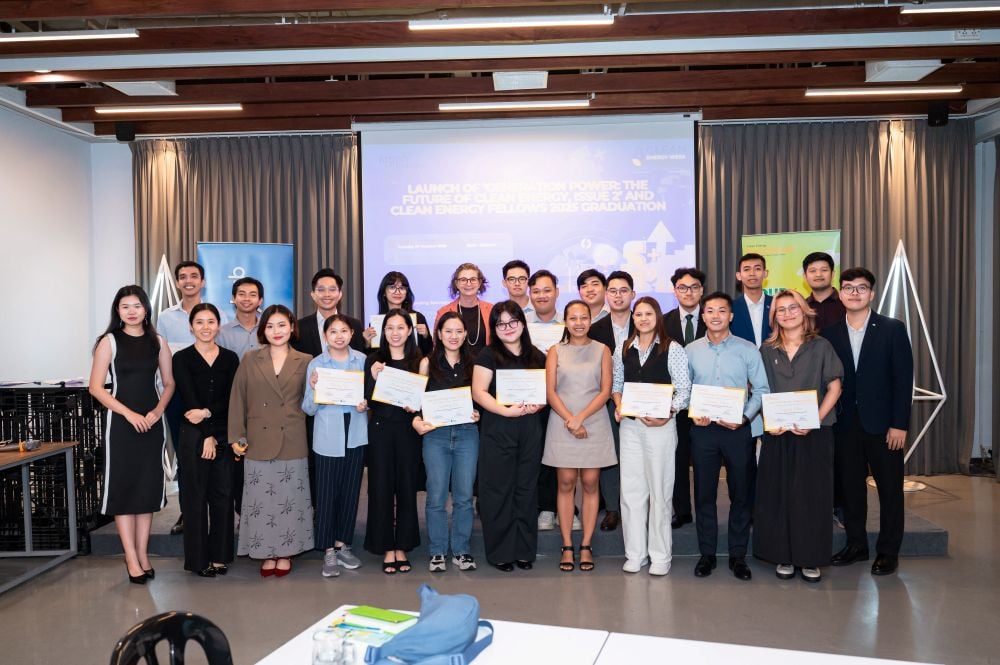Key Takeaways
- Twenty-one professionals from diverse sectors completed Clean Energy Fellowships in Cambodia to address clean energy challenges.
- The program culminated in the publication of “Generation Power: The Future of Clean Energy Issue Two,” showcasing fellows’ insights and proposals.
- EnergyLab Asia plans to expand its clean energy initiatives to Laos, aiming to further foster renewable energy advocacy in the region.
Advocating for Clean Energy in Cambodia
Twenty-one professionals graduated from the Clean Energy Fellowship program run by EnergyLab Asia, a Cambodian non-profit focused on renewable energy transition. The fellows, who completed their six-month program on October 7, drafted articles addressing clean energy challenges, potential solutions, and hopes for a sustainable future.
Their publications cover a range of topics from agricultural practices to renewable energy solutions for the garment industry. Key insights address energy transitions for rural women and the expansion of charging infrastructure for electric vehicles. Sol Saovady, Clean Energy program manager at EnergyLab Asia, highlighted the goal of the fellowship in nurturing early- to mid-career professionals as advocates for clean energy.
The culmination of their efforts is seen in the publication “Generation Power: The Future of Clean Energy Issue Two,” reflecting their aspirations for a resilient and cleaner Cambodia. Since the fellowship’s inception in 2019, 92 professionals have participated, with further plans to extend the program to Laos.
Nuon Monika, senior program manager at Konrad-Adenauer-Stiftung Cambodia, commented on the program’s aim to enhance academic writing skills among fellows, allowing them to communicate their ideas effectively. The second publication’s success, marked by zero dropouts, indicates the program’s growing impact.
Several fellows provided insights through their articles. Va Vortey addressed solar energy potential in silk farming, advocating for solar-powered ventilation systems to combat environmental variances affecting silk quality. Chem Veasna explored the use of biomass from agricultural waste, highlighting its dual benefit of pollution reduction and income generation for farmers, drawing from successful examples in Vietnam.
Va Diya focused on the obstacles businesses face when adopting clean energy technologies, recommending a “clean-by-default” approach combined with supportive policies and accessible financing. Sam An Mardy emphasized the importance of spatial data for energy planning, urging for data accessibility to drive innovative solutions.
Cambodia aims to reduce energy consumption by at least 19 percent by 2030 and to achieve 70 percent renewable energy utilization by that year. Alongside this, the government seeks to draw in energy-intensive industries, anticipating an energy demand increase of 38,600 GWh by 2030. The Clean Energy Fellowship has played a pivotal role in shaping the advocacy landscape for clean energy in Cambodia and serves as a model for future initiatives in the region.
The content above is a summary. For more details, see the source article.















